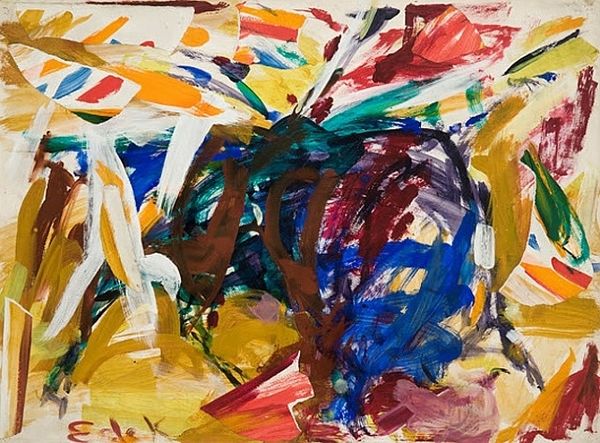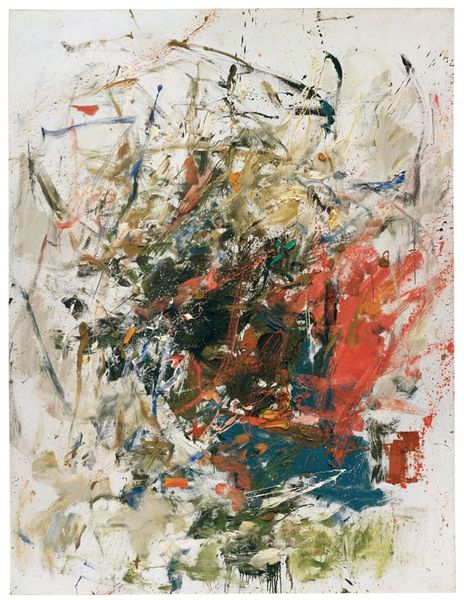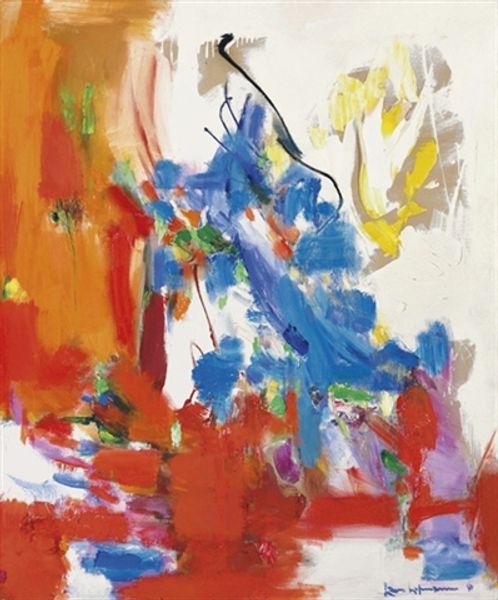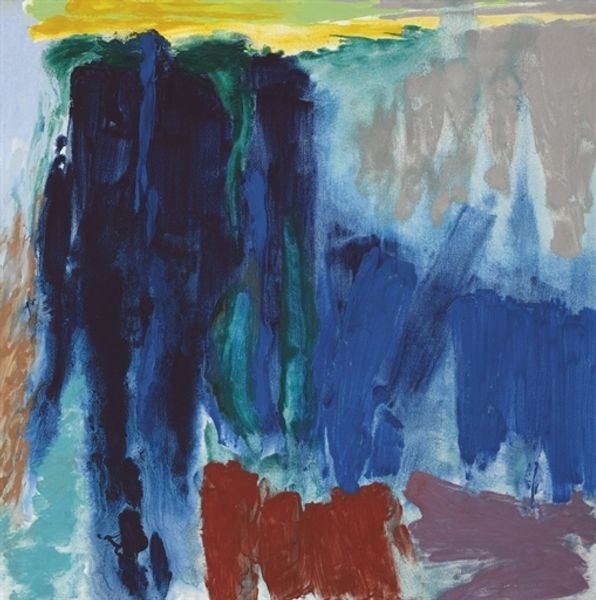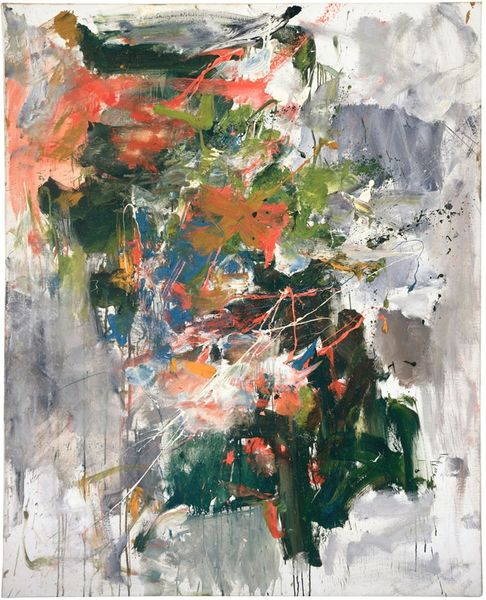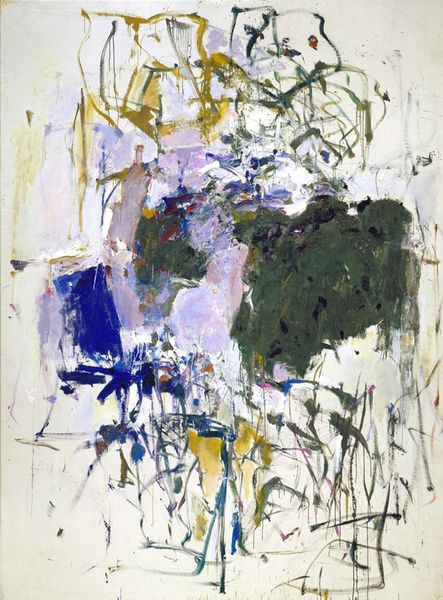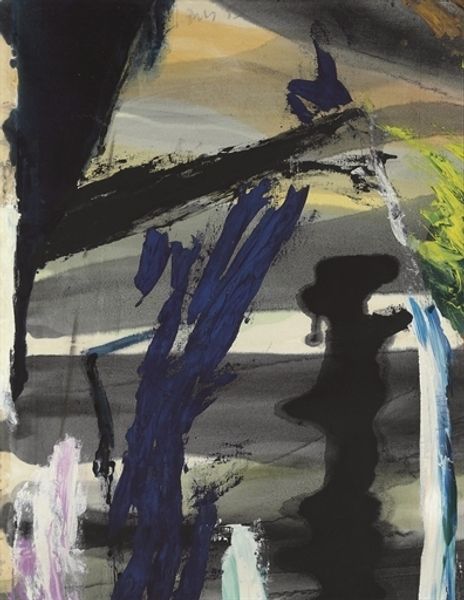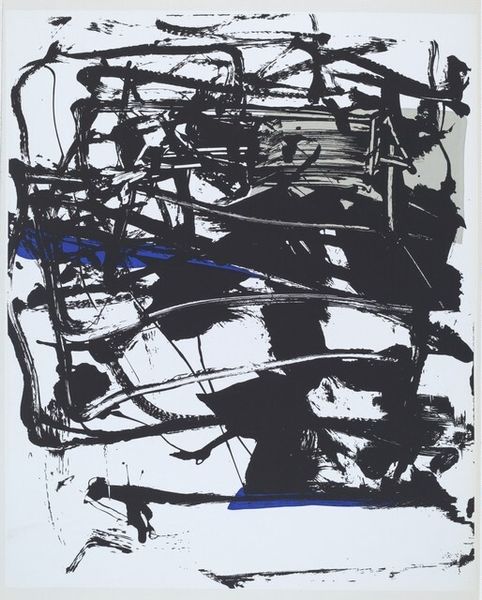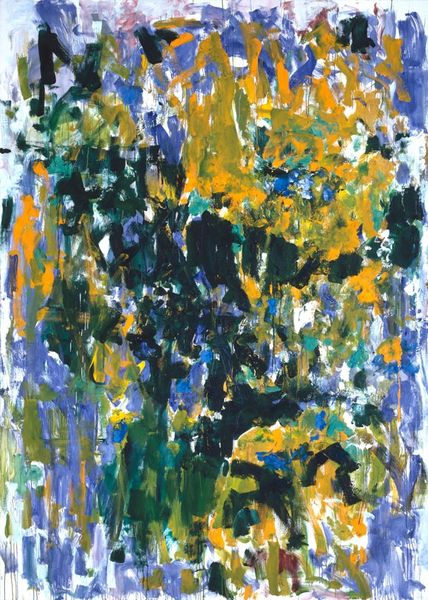
Dimensions: overall: 63 x 60 cm (24 13/16 x 23 5/8 in.)
Copyright: National Gallery of Art: CC0 1.0
Curator: Alright, let's talk about this “Untitled” piece by Michael Goldberg, created in 1986 using mixed media including acrylic. The texture is remarkably thick; you can almost feel the impasto. What are your initial impressions? Editor: The application of the acrylic seems almost frantic, wouldn’t you say? And the composition—layers and layers—draws my eye in different directions at once. How would you approach understanding this kind of piece? Curator: I’m interested in the materiality of it all. Look at how Goldberg builds up the surface. Each layer isn’t just color; it’s a physical act. Acrylic in 1986… What was happening culturally then, in terms of art production? Consider how the availability of acrylic paint influenced the scale and texture that Goldberg achieved here. Do you think that ties into the overall aesthetic? Editor: So, it’s not just about what he painted but *how* and *with what*? Curator: Exactly. Goldberg's choice of acrylic impacts not only the texture but also the speed with which he could work. This allowed him to layer and rework the composition rapidly, contributing to the chaotic energy you observed. How might the reception of abstract expressionism at this time shaped Goldberg's creative choices, considering prevailing ideas and pushbacks in the art world? Editor: I hadn’t thought about the implications of the materials so directly. Considering this abstract work as an interaction between artist, material, and the art market is compelling. Curator: It shifts the focus. It is no longer just an artist expressing themselves but labor meeting medium within the context of economic possibilities. What do you think that awareness does to our viewing experience? Editor: I suppose I’m looking beyond personal expression toward broader considerations. I find myself thinking about accessibility and mass production. It also reminds me that there were real costs associated with the creation of abstract art, not just conceptual decisions.
Comments
No comments
Be the first to comment and join the conversation on the ultimate creative platform.

